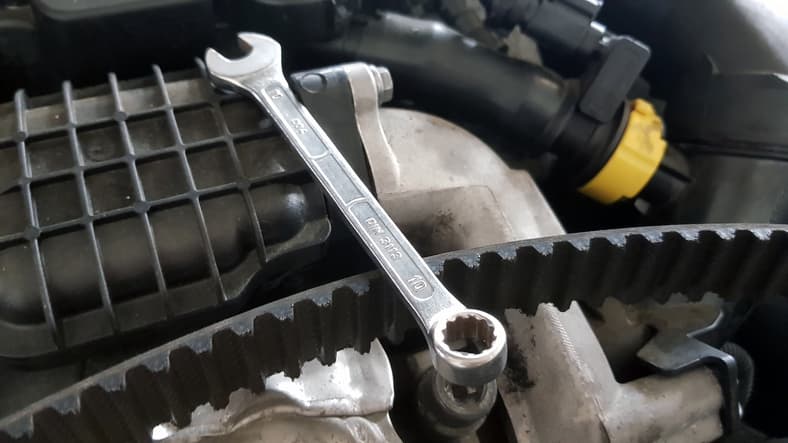How Often Should A Timing Belt (Cam Belt) Be Changed?
Keep Your Engine Running Smoothly

When To Change A Timing Belt
Knowing when to change your timing belt is important, as you don’t want it to break while you’re driving. When the belt breaks, it can cause a lot of damage to your vehicle’s engine, even irreparable damage, and so you’ll want to avoid this scenario where possible. This is why you should regularly check the belt when your car reaches a certain age or mileage and before buying a used car. Just like a car service is recommended after a certain number of kilometres or after 12 months (whichever comes first), it’s recommended that you change your timing belt in much the same way.
How Long Should A Timing Belt Last?
It’s thought that a timing belt should last up to eight years, and it should be changed after this time, but it does depend on the vehicle you drive.
These belts are typically made out of rubber, however, over time, rubber can begin to naturally dry out and crack. This is exactly what can happen with your tyres and why you may see cracks appearing in these, too. The rubber can also begin to stretch as the belt continually rotates. When this starts to happen, your vehicle can become less efficient and may produce more exhaust fumes as it burns more fuel.
How Many Kilometres Before Changing A Timing Belt?
Some car manufacturers recommend that a belt is changed after 75,000 kilometres, others might say up to 170,000km. This is a huge difference in distance and seems a little bit vague. Therefore, to check what is recommended personally for your vehicle, you should take a look in your vehicle manual. This should give you a better idea.
When a belt needs to be changed can also depend on how you’ve driven the vehicle and the conditions it’s been driven in. For instance, a car that has spent a lot of time idling in traffic could need a replacement belt sooner than one that hasn’t. Climate and driving conditions can also have an impact. Therefore, it’s recommended that the timing belt is checked over by a car technician every year or so. You could request that this is done during its monthly service.
How To Check A Timing Belt
Rather than waiting for your car’s timing belt to break before replacing it, it’s a good idea to check the condition of it regularly. As previously mentioned, a broken belt can cause severe damage to other parts of the engine, such as valves and connecting rods. Therefore, you should check it occasionally yourself for obvious signs of damage that could alert you of any problems.
First, you should see if you can feel anything strange when you’re driving. Do you notice a loss of power when accelerating, a rattling noise, or slow acceleration at lower revs? All of these things could be a sign that your vehicle’s belt has weakened and could need replacing. You should also check the amount of white smoke coming out of your exhaust. This can often be easier to see in cold weather, but an overproduction of exhausts could be a sign that the belt needs replacing.
Second, you can inspect the belt visually for signs of damage or excessive wear. You should remove the timing belt cover to reveal the belt itself. Look for cracks, frayed edges or worn teeth on the inside of the belt. The rubber shouldn’t be shiny or marbled, as this can be a sign that it’s worn away. You should use a fingernail to press into the belt and you should be able to see a small mark or imprint where the pressure was applied. If you can’t, it could be a sign that the rubber is becoming brittle.
Then, start up the engine and look at the belt as it moves around. It should stay tight and straight - any sign of bending or flexing means that it’s likely stretched and weakened over time.
If you think that the belt has weakened or could snap, you should take it to your local garage to have it looked at by a professional. We’d advise against changing the belt yourself, as it takes precision to install it in exactly the right position for it to do its job properly. With a new belt, you may see improved acceleration and better efficiency, so you shouldn’t put it off.
We hope that you have found this blog useful. If you are interested in getting a quote for car insurance , call us on 01 4003400 or get a quick quote at the top of this page.
